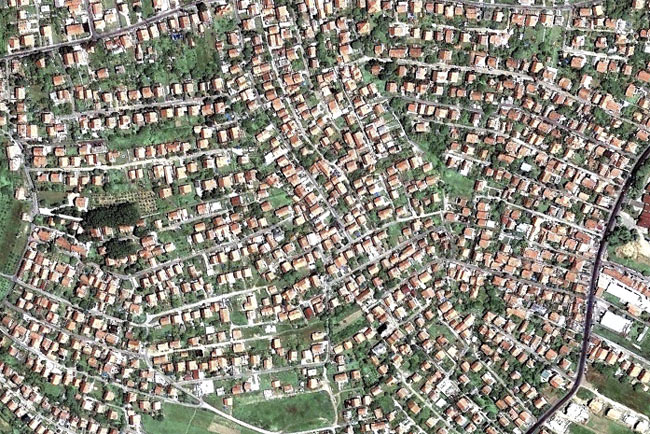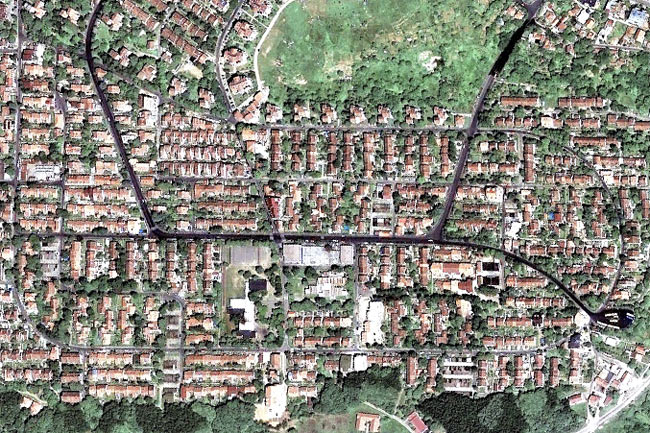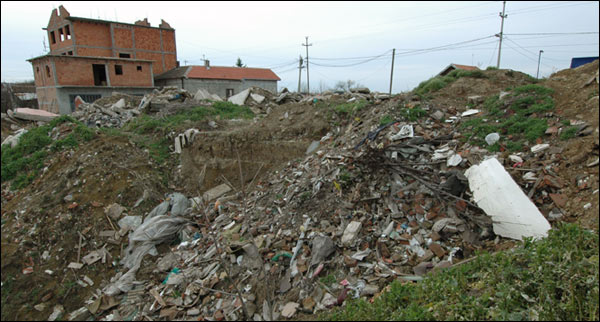What are the risks of building or buying an illegal construction?
| 08 March 2007 - Comments (0) | Reflections |
 In some parts of Belgrade, where the urban planning is not detailed yet, building a legal construction is challenging. It is complex, takes lot of time and cost real money. We know it very well as it is what we do. It can be tempting for some people to go sidetrack and build illegally or buy an illegal building. But what are the risks of doing so ? We will show here that they are not negligible.
In some parts of Belgrade, where the urban planning is not detailed yet, building a legal construction is challenging. It is complex, takes lot of time and cost real money. We know it very well as it is what we do. It can be tempting for some people to go sidetrack and build illegally or buy an illegal building. But what are the risks of doing so ? We will show here that they are not negligible.
No rules
Building without proper approval used to be tolerated because there was a time where there was no way to build legally. Procedures were not in place and urban planning was not done. Complete parts of Belgrade, especially in the outskirts, are built that way. “For the territory of the Master Plan of the City of Belgrade, informal settlements occupy 22% of the land for construction and 43% of all housing land, by far the largest portion in Serbia” [1]. Note the use of informal instead of illegal as “such individual houses almost always have some elements of legality (ownership of land, temporary house number, electricity, running water etc.)”. In the nineties, another problem was providing houses for refugees and the only option was to accept constructions without permit.
Kaluđerica is an example of a complete settlement built without permit. The picture below gives a visual clue of what means the unplanned growth of a settlement.

An example of unplanned urbanization in Belgrade in Kaluđerica (source Google Earth)
As a matter of contrast, we show below an example of planned urbanization in the southern outskirt of Belgrade in Zarkovo.

An example of planned urbanization in Belgrade (source Google Earth)
Strict rules
Yet, since 2003, The Planning and Construction Law [pdf] regulates the use of construction land and makes a criminal offence to build a structure without prior construction approval. The offense is punished by up to one year of imprisonment for the contractor and up to three years for the investor (article 149). The same law also defines a framework for the regulation of existing informal constructions prior the law.
Has it changed anything? Not really. We just need to look around us, in the fifth zone of Belgrade, to see that, still, many houses pop up without any approval. The main problem is that law enforcement has not been applied: “not a single judiciary case is known to have been filed and completed in the meantime” [1].
We find in [1], why the development of informal settlements has long been tolerated:
- Production of cement, bricks, tiles and other main building materials is one of the country’s rare full-employment industries. More than half of the production goes into informal construction.
- Savings of Serbian workers abroad are transferred mostly to building materials and informal housing in Serbia, enabling an economically significant inflow of foreign currency into the economy.
- Most unemployed, able male workers are temporarily engaged as construction workers in small teams on informal settlement construction, which is often their main source of income.
- For many individuals, families and social groups, building their own house in steps and on an affordable plot, bypassing the expensive, slow and complicated formal system of obtaining all the required permits, is the only real option in the Belgrade region. That specially holds for vulnerable social groups like refugees, the unemployed, ethnic minorities, young couples, etc.
- No official system of social housing exists in the Belgrade area (except in some pointed locations in the Master Plan, and some particular initiatives for young civil servants and Roma population).
- The practice of tolerating informal settlement development appears as an effective unofficial policy of social housing.
Another reason found in [2] is the “Obsolete, inflexible system of urban planning, lagging far behind the dynamic needs of transition and unable to adapt to the emerging market environment”.
Risks of building
Despite of the fact that some of the reasons above may, sometimes, justify the construction of an illegal building, there is today many risks and little incentive to do so, especially if you want to invest in construction. Building illegally put you in a grey zone.
No legalization
First, if constructions built illegally before may 2003 (before The Planning and Construction Law) can be legalized (the submission deadline for legalization applications was up to late last year), those built after cannot, at least not at this stage. Uncertainty and doubt is the rule for illegal new constructions. And some of them, will probably have to be put down, if they do not follow the urban planning.
Vulnerability
Second, the investor of the illegal construction is very vulnerable to pressures from corrupted agents (and corruption does exist in Serbia). Once the construction is well advanced, it is not uncommon to have the visit of somebody asking for money in order to let the construction continue. That money is pure loss, as it buys nothing but the silence of that agent. Refusing to pay may lead to terrible complications as the law is clearly against the investor. One can hardly build illegally and complain about corruption.
Law enforcement
Third, even if the law is usually not enforced, it can happen otherwise, and that can be related or not to the previous item. Once, in our neighborhood, it went up to the complete destruction of the house, a 600 square meters house financed by a foreign investor. The destruction was conducted by the authorities just after the roof was built as you can see below.

An illegal construction destroyed by the authorities (photos Beodom)
Bad surprises
Fourth, the owner of the illegal building is at risk of some bad surprises such as the neighbor building another illegal construction with no respect of any rules and putting up a wall few meters away from the owner windows. This is extremely common and you can see one example on the picture below. It's hard to resolve a dispute over illegal constructions. The first owner is likely at loss. On the contrary, if the first construction is legal, a complain against the illegal building has great chance to succeed.

An illegal construction being built in front of the windows of another illegal house (photo Beodom)
Another kind of bad surprise that is seldom but does happen is a problem with the land. People building illegally usually do not perform the geotechnical study of the land. That leads to constructions located on unstable ground as you can see below. Ignoring the urban planning may also lead to constructions located on the path of a road to be built.

Several constructions were here before a mudslide brought them all down (photo Beodom)

Aerial view of the mudslide shown above (source Google Earth)
Low market price
Last but not least, if the plan is to sell the construction once finished, the market price of an illegal building is clearly way below the regular market price of the same legal construction. It may even be very hard to sell at all as more and more people get scared with good reasons of the complications involved in buying an illegal object.
The main reason that still pushes people to build illegal constructions is that they have no way to finance a legal one. This is the situation of families with little revenue who build a house for themselves. They are ready to take all risks because they have no other option.
Risks of buying
When buying, it is always much safer to buy a fully legal object. That way, you do not have any uncertainty on your investment.
If your are anyway tempted to buy an illegal construction you must be careful to buy one built before may 2003 and one for which the owner submitted a complete application for legalization in compliance with The Planning and Construction Law. Investing in anything else is too great a risk.
Illegal constructions today have to be split in two. Those that are financed and built by a family to eventually live inside (mainly houses in the outskirts of Belgrade), and those financed and built by investors in order to be sold for profit (mainly apartment buildings). If you are looking to buy a place, you will be faced to the second category.
You must ask yourself why would investors build illegal constructions today as everything is in place to do it the right way. They want to save time and money and realize constructions that would otherwise not be allowed anyway. In short: they want to maximize their profit at the only expense of the buyer. Those constructions are usually quickly made, of substandard quality and a legal mess. They are definitely not a good investment and better avoided.
Sources
[1] Four strategic themes for the housing policy of Serbia, Theme 2 : Regularization and upgrading of informal settlements, Miodrag Ferencak, UN-HABITAT SIRP, contribution to the National Housing Conference: Towards a New National Housing Policy for Serbia, 6-7 July 2006 Belgrade Sava Center. [html], [pdf]
[2] Country Profiles on the Housing Sector - Serbia and Montenegro, Economic Commission For Europe, United Nations, New York and Geneva, 2006. [html], [pdf]






































